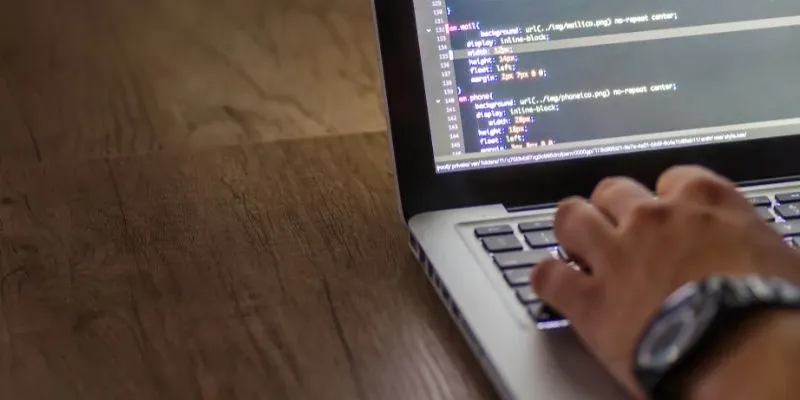October 2, 2025 marks the official VMware vSphere 7 EOS date. After that, VMware customers still running vSphere 7 will only receive “technical guidance.” That means no troubleshooting, no bug fixes, and no new security patches. For IT managers and data center leaders, this shift creates a real gap: production environments that remain critical but no longer backed by the vendor’s full support.
Many teams are now asking the same question: what happens when vSphere 7 hits EOS and support drops to “guidance only”? In plain terms, it means you’re left without fixes or troubleshooting at the exact time when vulnerabilities and outages can hit hardest. For IT managers responsible for uptime and compliance, that’s not a comfortable spot.
The real pressure comes from two sides: the cost of upgrading under Broadcom’s new licensing model and the operational risk of standing still. Some organizations can’t afford to jump immediately to vSphere 8 or to another hypervisor. That’s where ReluTech’s VMware alternative support makes sense. We keep vSphere 7 environments stable with hands-on troubleshooting and root-cause resolution, giving you breathing room to plan migrations to AWS or other platforms without rushing into expensive renewals.
What Does vSphere 7 EOS Mean?
VMware defines several stages in a product’s lifecycle:
General Support: includes new patches, bug fixes, troubleshooting, and security updates.
Technical Guidance: limited help after General Support ends. VMware may answer questions and point to documentation, but they won’t provide fixes.
End of Support: no vendor assistance at all.
For vSphere 7.x, vCenter 7.x, ESXi 7.x, and vSAN 7.x, General Support officially ends on October 2, 2025. Some contracts may extend into Technical Guidance, but those customers will notice the absence of security patches or root-cause troubleshooting.
This is more than a label change, it shifts responsibility from VMware back to your team.

Risks of Staying on vSphere 7 After EOS
Security Gaps
Without patches, every new CVE published for vSphere 7 remains unaddressed. Attackers often target older platforms precisely because fixes are no longer provided. That leaves your hypervisor and workloads open to exploitation.
Compliance Trouble
Regulated industries often require software to be vendor-supported. Running vSphere 7 post-EOS can mean failed audits, stricter insurance terms, or even penalties in sectors like healthcare and finance.
Operational Uncertainty
When outages occur, VMware won’t troubleshoot. That means longer downtime, more stress on internal staff, and higher costs to resolve issues. Hardware vendors may also stop certifying firmware and drivers against vSphere 7, compounding the problem.
Financial Drag
It may seem cheaper to “do nothing,” but unsupported systems often lead to unplanned expenses: emergency consulting, extended downtime, or fast-tracked migrations done under pressure.
The Cost and Complexity of Upgrading
Broadcom’s licensing changes have introduced sharp price increases—reports suggest anywhere from 300% to 1000% depending on the environment. Renewals now push customers into subscription bundles, often requiring more products than they need.
Upgrading to vSphere 8 isn’t just a licensing change:
Compatibility checks for hardware and drivers.
Potential refresh of hosts that can’t support newer versions.
Retraining of IT staff.
Testing and validation to avoid instability.
For many IT managers, this cost and complexity is what drives the search for alternative support.

Alternatives to VMware OEM Support
There are three main paths:
Upgrade to vSphere 8 – Keeps you on VMware’s roadmap, but at a high cost.
Migrate to another hypervisor – Options like Nutanix AHV, Hyper-V, or open-source solutions exist, though migrations can be disruptive.
Engage third-party VMware support – External providers like ReluTech extend the life of vSphere 7 environments with hands-on troubleshooting, root-cause analysis, and SLAs that VMware won’t offer post-EOS.
Why ReluTech’s VMware Alternative Support Stands Out
ReluTech offers a practical bridge between today’s reality and tomorrow’s migration:
Hands-on problem solving: Our engineers don’t just point you to a knowledge base, we roll up our sleeves and resolve issues.
Elastic contracts: Flexible terms that align with your timeline, whether that’s six months of coverage during a migration or multi-year support.
Cost efficiency: Customers typically save 50–90% compared to VMware OEM renewals.
Migration funding: Through ReluTech’s asset buyback and leaseback programs, IT teams can unlock cash tied up in hardware to fund AWS or cloud initiatives.
End-to-end stability: We support VMware environments alongside hardware, making sure both layers remain covered.
Note: ReluTech support applies to customers with perpetual VMware licenses. If your environment is subscription-based, we can still help evaluate alternatives, but ReluTech VMware alternative support is not available under that model.

Planning Migration Without Risk
Not every organization can upgrade or migrate immediately. A smart approach includes:
Audit current environment: Understand which clusters and workloads still depend on vSphere 7.
Decide on path forward: Upgrade, migrate, or stabilize with third-party support.
Engage stakeholders: IT, procurement, compliance, and finance must align.
Pilot migration projects: Test before moving production workloads.
Bridge support contracts: Ensure stability throughout the transition.
This is where ReluTech fits, keeping the environment stable and supported while migration planning takes place.
Cost Comparisons: OEM vs External Support vs Migration
Option | Cost Profile | Risks | Benefits |
Stay Unsupported | Low upfront, high incident cost | Security, compliance, downtime | Delays decisions |
Upgrade to vSphere 8 | High upfront (licenses, hardware, training) | Vendor lock-in, high TCO | Vendor backing, features |
Migrate to Alternative Hypervisor | Medium-high upfront | Migration complexity, retraining | Avoid Broadcom lock-in, future flexibility |
Third-Party Support (ReluTech) | Low-medium | None if vendor contract clear | Lower cost, hands-on fixes, migration bridge |
The financial case for external support is strong, especially for organizations not ready to commit to a full migration.
Quick Takeaways
October 2, 2025 is the deadline, after that, vSphere 7 only gets technical guidance.
Staying unsupported exposes your business to security, compliance, and downtime risks.
Upgrading under Broadcom’s new licensing model comes with steep costs and forced bundles.
Migration paths are available but take time, budget, and planning.
ReluTech offers elastic VMware alternative support that bridges the gap, saves money, and funds cloud migrations.

What’s Next?
The vSphere 7 EOS deadline is less than a year away. VMware customers face a tough choice: pay more for less support, rush a migration, or risk running unsupported. But those aren’t the only options.
ReluTech gives IT managers a fourth path: stable, affordable, hands-on support that keeps VMware environments safe and compliant while freeing up budget and time to plan the right move.
If your VMware contract extends beyond October 2, 2025, now is the time to act. Don’t leave your data center exposed. Contact ReluTech today to learn how VMware alternative support can extend the life of your VMware environment and help fund your move to AWS or other platforms.
